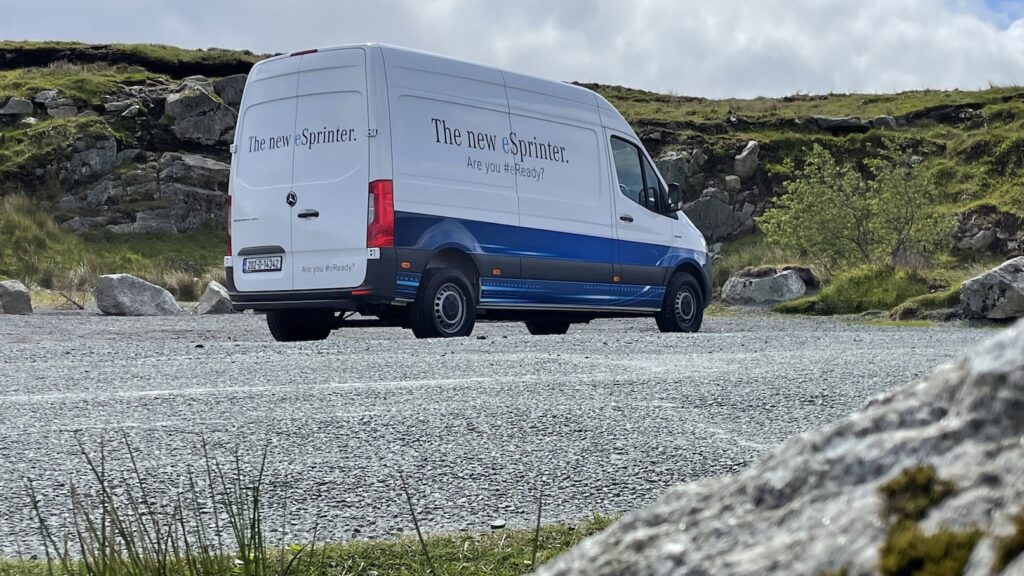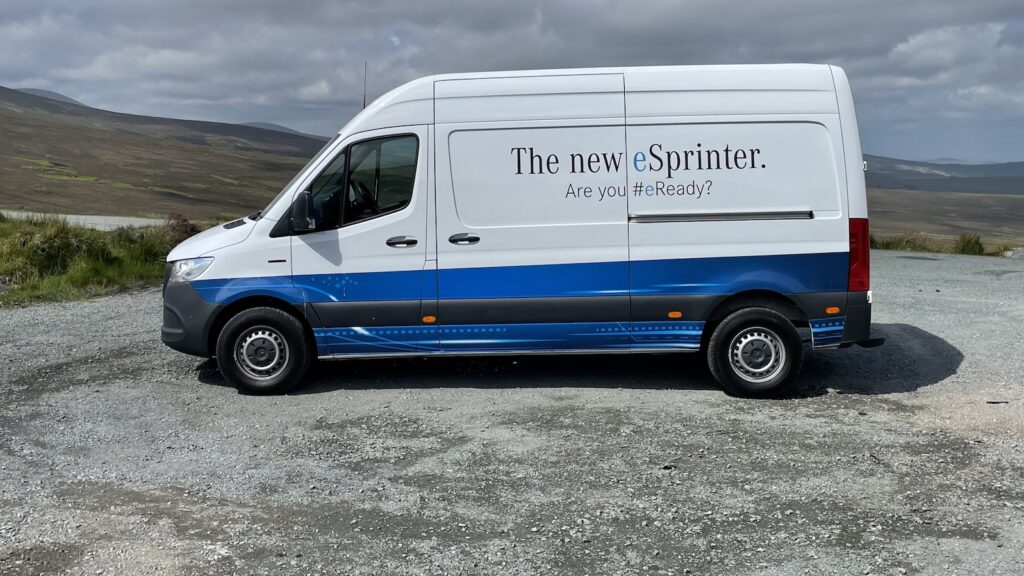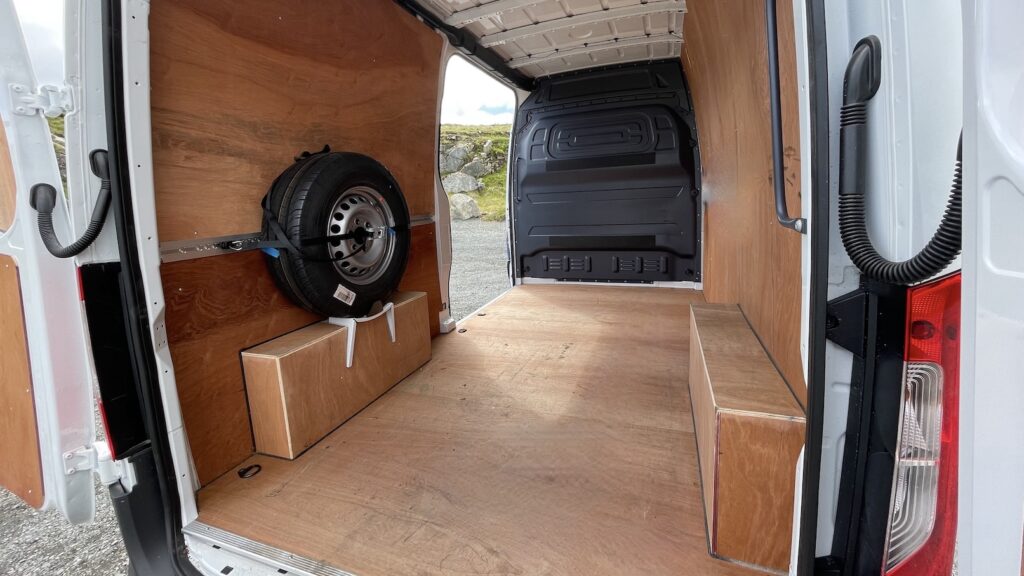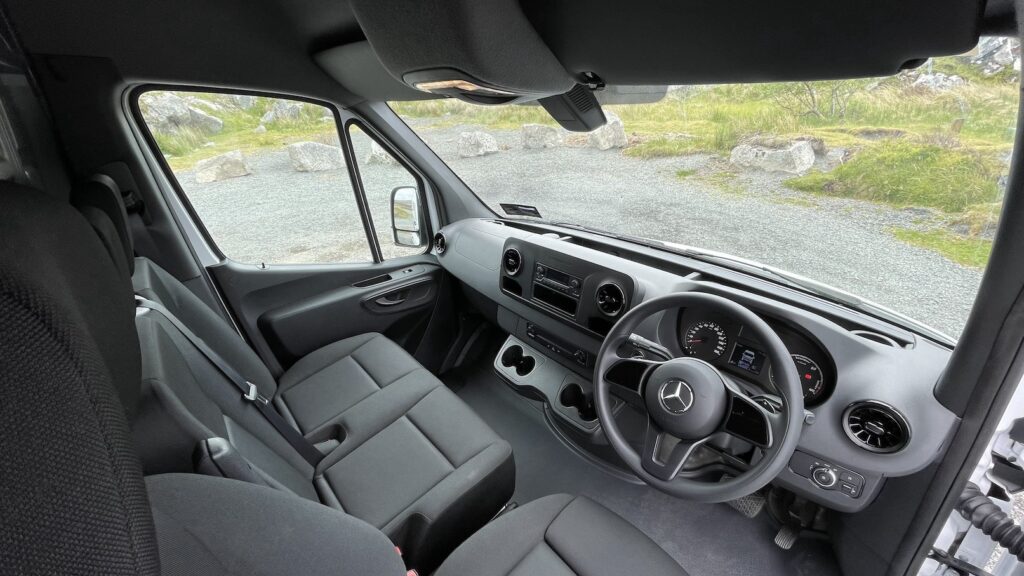12/06/2021 We’ve taken the new electric Sprinter for a spin and can confirm the zero emissions van is a good choice for local deliveries. The eSprinter may have a small battery (35kW net) and range (120km) but the Mercedes-Benz commercial points the way towards what we expect to be huge growth in urban focused electric vans.

The eSprinter rides on all season tyres, is front wheel drive only and sits on the standard Sprinter wheelbase. At 6.088m long it features the same 11cubic metre cargo/load area as the standard high roofed Sprinter but sits a tiny bit taller on the road as the flat battery pack raises the box ever so slightly. It has a payload capacity of 1045kg, a fairly hefty kerb weight of 2455kgs and a gross vehicle weight of 3500kgs. It cannot tow but this type of LC-EV is meant to do the last leg and lighter end of transport logistics. The eSprinter like its smaller sibling the eVito (electric Vito) is targeted at users who will charge it up overnight, do a working day of up to 120kilometres without needing to top up the charge and repeat! You can get a higher capacity battery for a premium (one cell more) and while it extends the range it adds to the vehicle’s weight and thereby reduces the payload capacity somewhat.

The eSprinter is charged via a CCS (combo AC/DC) charging port located behind the big Merc badge in the grille… the conventional fuel flap (by the passenger door) remains and even opens – to reveal nothing. There is an onboard 7.4 kW AC charger and the standard eSprinter can take a 20kW DC ‘fast’ charge. Again this relatively low rate of DC charging ability can be upgraded but Mercedes tells me that it isn’t really necessary for the van’s target audience. Like all EVs it is an automatic and couldn’t be simpler to drive – pull the steering column’s right stalk down into ‘D’ and press the accelerator. Its electric motor delivers a peak output of circa 120hp and there is up to 300nm of torque (comparable with a 311 FWD CDI Sprinter). The eSprinter is not a rocket but can still shift along up to the limiter without risking your licence. During our unloaded test the ride quality was soft and the driver will have no comfort complaints as the cabin is whisper quiet compared to a diesel! The standard eSprinter battery capacity for Ireland is a modest 35 kWh (41 kWh gross) but this will do a real world 120kms and even more if driven with extra care. It can be charged from 10% – 80% in 70 minutes or over a more extended 6 hours using a standard 7.4 kW street/fuel station charge point.

In terms of performance the eSprinter’s maximum speed can be configured. Top speed can be set at either 80 km/h, 100 km/h or 120 km/h. Our test van was set to 80km/h and this worked fine for short stints on the motorway, but as with all EVs, motorways are the enemy in terms of power consumption and the rare chances the EV can regenerate power from braking. We enjoyed the eSprinters commanding driving position and the relaxing nature of its EV power train.

Mercedes-Benz sales manager Fergus Conheady says the eSprinter: “will appeal to those large fleet operators, trades and maintenance personnel, utilities, vehicle hire and parcel delivery specialists whose operations involve extensive movements within city and built-up environments and whose preference is for vans that satisfy the concerns of a more eco-aware society”. Inclusive of a €200 VRT charge and exclusive of VAT, the eSprinter comes on the market from a competitive €52,000 and qualifies for a grant of €3,800. “Low-emissions, reliable and flexible, the new eSprinter has all of the attributes by which fleet operators measure their vehicles,” Conheady added. “A proven and spacious performer, it has the specifications that equip operators to demonstrate their responsible eco-friendly credentials.” Michael Sheridan




